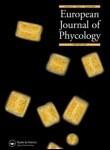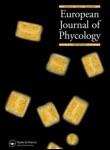Saunders, Gary
Person Preferred Name
Gary Saunders
Related Works
Content type
Digital Document
Abstract
Small-subunit ribosomal DNA (SSU) sequences for 14 members of the rhodophyte order Acrochaetiales were used to generate phylogenetic trees to determine whether the Acrochaetiales is monophyletic and to assess the relationships of acrochaetioid algae to closely related taxa. Within the Acrochaetiales, two strongly supported groups are recognized: one group that includes, in addition to three other species, the type species of the genera Acrochaetium, Audouinella and Rhodochorton; and a second group that includes an unequivocal representative of Colaconema and nine additional species. The relationships of these groups with the Batrachospermales, Palmariales and Nemaliales were not resolved and the possibility that the Acrochaetiales is polyphyletic was not eliminated. Resolution of relationships for species within these groups was strong in only a few cases, with many of the phylogenetic issues at this level remaining equivocal. Our results do not position Camontagnea in the Acrochaetiales, as has recently been suggested, but strongly ally this genus to the family Rhodothamniellaceae of the Palmariales. The phylogenetic position of Rhododraparnaldia, an alga intermediate between the Acrochaetiales and Batrachospermales, remains unresolved. These molecular results provide a foundation for assessing the taxonomic significance of phenotypic characters (e.g. anatomy, life histories, morphology, phycoerythrin type and plastid details) variously considered taxonomically significant in the Acrochaetiales.
Origin Information
Content type
Digital Document
Abstract
Systematics of the red algal order Acrochaetiales and related taxa was investigated using combined small- and large-subunit nuclear ribosomal DNA (SSU and LSU rDNA, respectively) sequence data. These data were subjected to distance, parsimony and maximum likelihood analyses. The resulting phylogenies were congruent with previously published SSU results in that all included orders (Balbianiales, Batrachospermales, Nemaliales, Palmariales and Thoreales) were resolved as monophyletic except the Acrochaetiales, which consisted of two lineages (Acrochaetiales I and II). The Batrachospermales and Thoreales occupied equivocal positions as early diverging lineages, while the Balbianiales generally resolved as sister to an Acrochaetiales–Nemaliales–Palmariales (ANP) complex. Relationships among the four lineages of the ANP complex were not completely resolved, but detailed analyses weakly positioned Acrochaetiales II as sister to the Nemaliales, whereas Acrochaetiales I displayed a moderate to strong affiliation with the Palmariales. Acrochaetiales I included representatives of the genera Acrochaetium, Audouinellaand Rhodochorton, whereas Acrochaetiales II had a number of acrochaetioid species including a representative of the genus Colaconema. Compared with published SSU phylogenies, bootstrap values within the two Acrochaetiales lineages increased substantially in combined SSU/LSU analyses. Based on these results, emended generic descriptions are provided for Acrochaetium, Audouinella, Colaconemaand Rhodochorton, and a new family of acrochaetioid algae is described, the Colaconemataceae J. T. Harper etG. W. Saunders. The Acrochaetiaceae now includes the genera Acrochaetium, Audouinellaand Rhodochorton, while the Colaconemataceae is considered monogeneric at this time. It is quite likely that additional genera will be recognized within the Colaconemataceae pending further investigation. Acrochaetiaceae is retained as the sole family of the Acrochaetiales, although the tenuous recognition of the Palmariales as distinct from this order is discussed, whereas Colaconemataceae is transferred to the new order Colaconematales J. T. Harper et G. W. Saunders.
Origin Information


